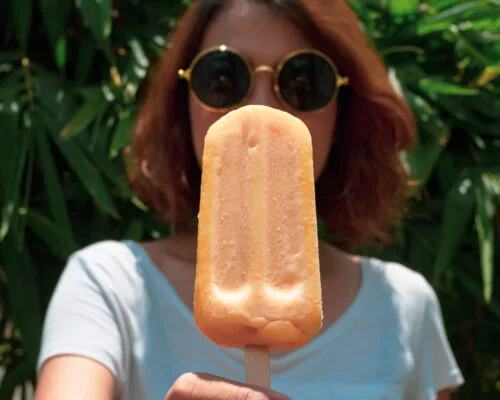Ask Keri: If I struggle to drink enough water, are there other ways to stay hydrated?
Keri Says: There are actually so many ways to hydrate that don’t involve drinking water that there’s really no excuse to get behind on your hydration regimen.
Especially because hydration is so important. Not getting enough H2O is linked to everything from fatigue to weight gain to a dull complexion.
That means I’m always going to recommend you drink plenty of water every day. But you may struggle to meet that amount. Or maybe you’re just looking for ways to up your hydration even more, especially if you’re working out a ton or it’s super hot outside (or even super cold…).
For those scenarios, here are seven ways to hydrate that don’t involve a faucet.
(Photos: Shutterstock)
7 Ways to Hydrate Beyond Drinking Water
1. Healthy Sports Drinks

Most exercisers who aren’t training crazy hard don’t necessarily need a sports drink, but replenishing electrolytes is absolutely a good idea if you’re sweating a ton. The issue is that most of the drinks contain a lot more sugar than someone who isn’t an elite athlete can process. I’m a huge supporter of HALO Sport, which skips added sugar and delivers flavor along with electrolytes and minerals.
2. Coffee

This one might come as a surprise, but coffee is mostly water! It also contains lots of antioxidants and is linked to all kinds of health benefits. Of course, you do need to watch your caffeine intake or it’ll start to affect your sleep and cause other issues like stomach upset and irritability. In other words, this can’t be your only source of hydration, but it can be in the mix.
RELATED: How to Choose Coffee That’s Good for You and the Planet
3. Tea

Similarly, tea is also a great source of H2O (and antioxidants!). I love black and green, but unlike coffee, it’s also easy to find delicious herbal varieties that don’t contain caffeine.
4. Hydrating Foods

Most fruits and vegetables have extremely high water content—some can be up to 96 percent water. The trick is that you have to eat them raw for this benefit, because water is lost during cooking. Thankfully, lots of hydrating foods are best eaten raw, anyway. Some of my favorites are cucumbers, celery, grapefruit, cantaloupe, and watermelon. Iceberg lettuce is another one—it may be lacking in the nutrient department compared to darker leafy greens, but it’s 96 percent water. Eating soup is also hydrating.
RELATED: Does Iceberg Lettuce Have Any Nutritional Value?
5. Milk and Milk Alternatives

Like putting organic whole milk in your morning coffee? That counts as extra water. Alternative milks such as almond, rice, soy, and hemp are also mostly water. (I mean, you’ve heard about how many almonds are in almond milk, right?)
6. Vegetable Juices

Vegetable juices, especially green juices made with parsley, spinach, kale, celery, carrots, beets, fennel, ginger, and mint, are a great way to get in fluid and a whole lot of nutrition. Home juicing is best, but if you go for the store bought be careful to read the labels—many “green” juices are actually mostly fruit juice, which packs a ton of liquid sugar.
7. Kombucha

This fermented tea is hydrating and comes with gut health benefits. You can make it yourself at home for almost zero dollars, or opt to snag a bottle at your health food store. Just be sure to look for one of these low-sugar brands.





























